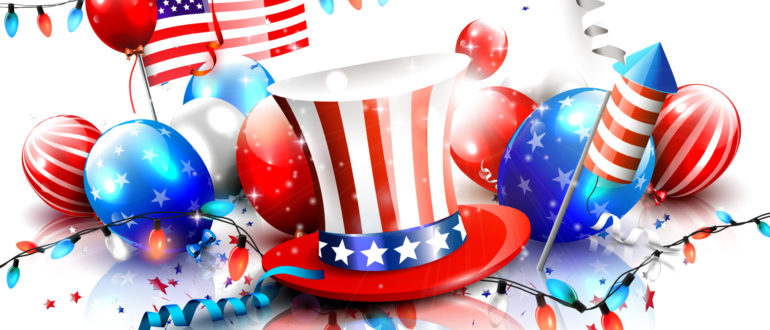
Independence Day
No matter how you choose to celebrate this year, capture those memories through photos, stories and writing. Preserve a snapshot of how you and your family mark this, and other holidays, so future generations can better understand the importance of Independence Day.
This is excellent information about how we and our ancestors celebrated the 4th of July holiday. How are you celebrating this year? Would love to hear how your family celebrated this year. Did you have a picnic, go see fireworks, have a bar-b-Que with family and friends? Let us know.
*****
Thomas MacEntee of High Definition Genealogy investigates the origins of Independence Day and how our families have celebrated the holiday.
Recently, I went through some old photos of my family celebrating Independence Day and it was interesting to see some of the same traditions from past generations still hold true today. Naturally I had to do some research as to how some traditions got started and why we mark this national holiday in certain ways.
The Declaration of Independence – Read Wide and True
The first printing of the Declaration of Independence was made late in the afternoon on Thursday, July 4, 1776 by a local Philadelphia printer. Since the Continental Congress had mandated that proclamations of the document be made throughout the nation, copies were dispersed on horseback to each colony. While the Pennsylvanischer Staatsbote(German language) newspaper was the first newspaper to announce news of our nation’s independence, it was the Philadelphia Evening Post, which printed the declaration in full on July 6, 1776.
When Was the First Independence Day Celebration?
The first celebration of the adoption of the Declaration of Independence by the Continental Congress on July 4, 1776 was a year later in Philadelphia, the same city where the congress was held. Festivities included music, parades and fireworks. The first official recognition of Independence Day as a holiday was by the Massachusetts legislature in 1781. The oldest continuous Fourth of July celebration is in Bristol, Rhode Island, where it has been held since 1785.
It wasn’t until 1870 that Congress made July 4 of each year a national holiday to recognize the start of this nation. And in 1941, it became a paid holiday for all federal government employees.
July 2 – The Real Independence Day?
Did you know that originally there was quite the controversy over which day to celebrate our nation’s independence? The original resolution put forth in the Continental Congress by Richard Henry Lee, the delegate from Virginia, was adopted on July 2, 1776. It was that same day that John Adams wrote to his wife Abigail “will be celebrated, by succeeding Generations, as the great anniversary Festival.”
Adams was so adamant as to the “correct” date for celebration that he supposedly refused to attend events related to our nation’s independence if they fell on July 4. Ironically, he and Thomas Jefferson both died on July 4, 1826.
United States Flag as Photo Identifier
Many of the old photos of your family marking the Fourth mostly likely show them holding small flags or have flags displayed. If you know the history of our country’s flag, and when the configuration of stars was changed, you have a handy clue to help you date a photo.
Visit the Flag Timeline at http://www.ushistory.org/betsy/flagfact.html and you’ll see that the U.S. flag had 45 stars as of 1896 (when Utah became a state on January 4)and then had 46 stars after November 16, 1907 (when Oklahoma became a state).
It isn’t always easy to count the stars due to folds etc., but look at how the edges of the field are laid out and there is a difference between the versions. Also keep in mind that although some families didn’t replace their flags right away, you’ll at least know that a 46 star flag had to be after 1907, etc.
Fourth of July Ephemera and Memorabilia
As you sift through your family archives and mementos, you may come across a variety of items related to the Fourth of July: old photos, postcards, programs for concerts and readings of the Declaration of Independence.
These items offer a glimpse at how our families celebrated this holiday in years gone by. Look closely at what people wore, what activities they attended and, if you’re lucky enough to find letters and diaries, how they felt about the holiday. Many of these items are easy to scan using the Flip-Pal mobile scanner and the digital images can be incorporated into your family history research.
* * *
Sue Thornton



Comments 0